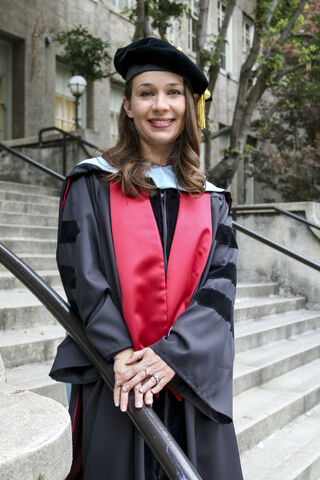Intelligence
Equity for Twice-Exceptional Students
Part 1: Dr. Deanna Westedt on serving gifted students with learning challenges.
Posted July 20, 2020

As a young child, I had a speech impediment. I sounded like this: “The wabbit was wunning sound." It was corrected in third grade, thankfully, but until then it impacted my schooling (mainly spelling). However, I was simultaneously grade-levels ahead on everything else. I was something we call twice-exceptional (2e) in the education field: being gifted yet simultaneously having a disability or special need that can sometimes interfere with academics.
Research suggests 2.5 to 36 percent of gifted students are 2e (with 17 percent being one of the most common findings), though the number of students recognized as 2e can be much lower due to issues like disabilities masking giftedness (just as giftedness can mask disabilities), inequity in gifted assessment and identification, and more (Rankin, 2016). As you can imagine, securing equity for 2e students can be hard.
I had the pleasure of interviewing Deanna Westedt, Ed.D., who is entering her 21st year in education has a doctorate in Curriculum and Instruction. Dr. Westedt developed presentations for parents, educators, and students on providing accessible learning to all students and conducted a research study on the impact of flexible differentiation as a way to address the needs of students' overlapping identities, including the twice-exceptional population. .
Here, Dr. Westedt shares her findings (see Westedt, 2019) on how schools can best serve students who are intellectually gifted but also have challenges such as learning disabilities or lacking English language proficiency.
Jenny Rankin (JR): What are the dynamics of a twice-exceptional learner, and what does the term mean within the context of the self-contained classroom?
Deanna Westedt (DW): While the term twice-exceptional can be used to encompass many intersections of identities, it most often is used to discuss students whose overlapping identities include gifted with learning disabilities. In addition to this population of students, my research also focused on twice-exceptional students whose overlapping identities included English Language Learner status and gifted markers. I say markers because students at the age of the study participants are not yet identified as “gifted” by the school system, so I utilized a screening tool by Prufrock Press in my research to identify students that exhibited consistent traits of giftedness.
Twice-exceptional students of all types experience genuine challenges in the self-contained classroom due to the way in which their two very distinct identities overlap and the resulting symbiotic interaction of each identity. I refer to them as “out of the classroom box” learners. And the life-altering risk factors they face in traditional learning environments are abundant.
Jenny Rankin (JR): I’ve heard you use the term “teaching children with superpowers," which I love. Explain what that means and if there are barriers this population of students experience in accessing the curriculum?
Deanna Westedt (DW): Children that present with diagnoses such as ADHD and autism spectrum disorder very often come with what I refer to as superpowers. They are the kids that can memorize the entire periodic table in second grade or identify the type of engine that is in a car just by hearing it from outside. Obviously, we can appreciate these abilities as strengths that go beyond what the average student might be able to do and it is often due to a common characteristic among children with these diagnoses to hyper-focus or perseverate on a particular topic. They are our inventors, our thinkers, our creators.
Unfortunately, these children experience a challenge in conforming to the constraints of a self-contained classroom, which places them within a deficit model narrative. This happens when their specially wired brains are perceived as problematic for a classroom setting, rather than emphasizing that it is the classroom setting that is problematic for the specially wired brain.
Another barrier these students face in accessing the gifted resources of our school system is the screening process. Many students are not allowed to be considered for the gifted program unless they meet a GPA requirement. Such societal normatives serve as archaic systemic barriers that must be reconsidered. There are many highly gifted students who will never meet this requirement because their disabilities become a barrier. When this happens, students’ self-perceptions are greatly influenced and we risk alienating them from the very educational experience that should enable them to reach their potential.
What Next?
In my next post for this column (Part 2), Dr. Westedt will provide more insight into how schools can best serve students who are intellectually gifted but also have challenges such as learning disabilities or lacking English language proficiency.
References
Rankin, J. G. (2016). Engaging & challenging gifted students: Tips for supporting extraordinary minds in your classroom. Alexandra, VA: ASCD.
Westedt, D.M. (2019). Use of formative assessment to structure flexible differentiated learning groups: A pathway to equity. (Doctoral dissertation). University of South Carolina, Columbia, SC.




